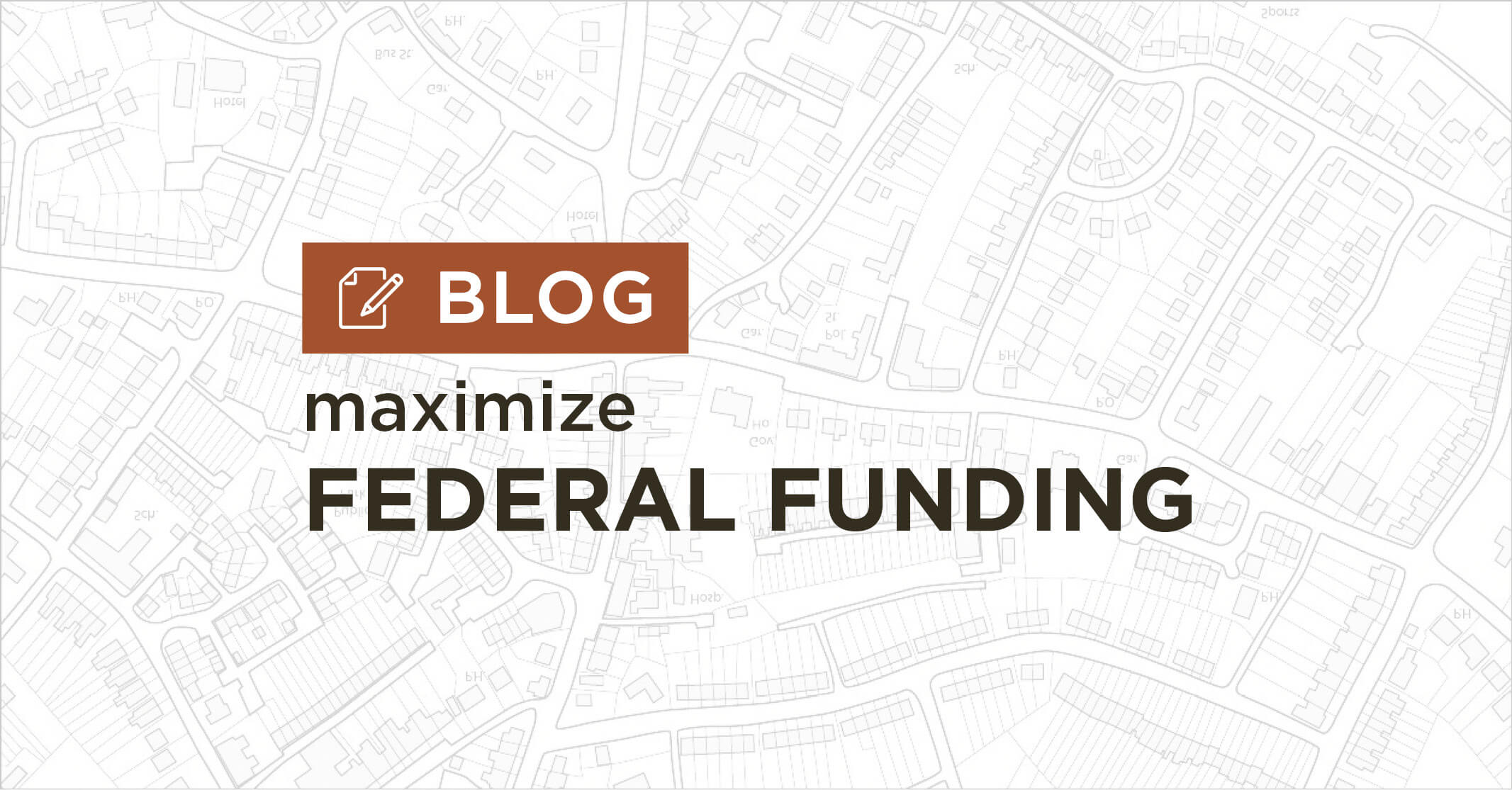Once-in-a-Generation Funding Aims to Benefit All Communities
Two recently enacted pieces of federal legislation have opened the door for communities across the country to reap millions of dollars in federal funding to support infrastructure upgrades and improvements in their jurisdictions. The Coronavirus State and Local Fiscal Recovery Funds (SLFRF), a part of the American Rescue Plan (ARP), went into effect in May of 2021 to help governments meet their immediate pandemic response needs. Recent changes to ARP have opened the door to more infrastructure-focused spending, including roadway construction and maintenance, water and sewer system investments, and stormwater management projects.
The more recently enacted Bipartisan Infrastructure Law has earmarked over $1.2 trillion over five years for more widespread infrastructure improvements. This massive program will focus on improving the safety of our transportation system through repairing and rebuilding roads and bridges, creating healthy and sustainable public transportation options, modernizing and expanding passenger and freight rail efficiency and safety, and upgrading our nation’s airports, just to name a few.
The professionals with Snyder & Associates are uniquely positioned to help your community get its share of these funds for critical infrastructure projects. Since 1977, our team has been building trusted relationships with key community leaders and decision-makers at all levels of government across the Midwest. We can assist your organization in laying the groundwork to secure the full benefits your community is entitled to.
American Rescue Plan (ARP) Funds Expanded by SLFRF
For most jurisdictions, SLFRF funds can be used to replace lost public sector revenue due to the pandemic. Recipients may opt for a standard allowance of up to $10 million or calculate their specific revenue loss using a formula provided by the Treasury Department.
In addition to the previously mentioned roadway construction and maintenance project allowances, SLFRF funds can be used to invest in water and sewer infrastructure, improve access to clean drinking water, and support vital wastewater and stormwater infrastructure.
Eligible water and sewer projects include those allowed under the EPA’s Clean Water State Revolving Fund (CWSRF), EPA’s Drinking Water State Revolving Fund (DWSRF), and certain lead remediation projects, as well as aid for private wells and septic units.
Nationwide Allocation from Bipartisan Infrastructure Law
At over $1.2 trillion over five years, the Bipartisan Infrastructure Law is perhaps the largest commitment of Federal funds for infrastructure spending in a generation. Every state is slated to receive an allotment of these funds for roadway and bridge construction and repair and numerous other transportation-related projects, as previously mentioned. Here are more detailed explanations of the funding share for Iowa, Wisconsin, Nebraska, Missouri, and South Dakota.
In addition to the state-specific funds, state and local governments will be able to compete for these new & expanded competitive grant programs anticipated to launch over the next year:
- Safe Streets for All ($6B, new)
- Rebuilding American Infrastructure with Sustainability and Equity (RAISE) Grants ($15B, expanded)
- Infrastructure for Rebuilding America (INFRA) Grants ($14B, expanded)
- Federal Transit Administration (FTA) Low and No Emission Bus Programs ($5.6B, expanded)
- FTA Buses + Bus Facilities Competitive Program ($2.0B, expanded)
- Capital Investment Grants (CIG) Program ($23B, expanded)
- Federal Aviation Administration (FAA) Terminal Program ($5B, new)
- MEGA Projects ($15B, new)
- Promoting Resilient Operations for Transformative, Efficient, and Cost-saving Transportation (PROTECT) Program ($8.7B, new)
- Port Infrastructure Development Program ($2.25B, expanded)
- Federal Highway Administration (FHWA) competitive grants for nationally significant bridges and other bridges ($12.5B, new)
- FTA All Station Accessibility Program ($1.75B, new)
- Charging and fueling infrastructure discretionary grants (Up to $2.5B, new)
- Reconnecting Communities Pilot Program ($1B, new)
- Strengthening Mobility and Revolutionizing Transportation (SMART) Grant Program ($1B, new)
With such vast funding opportunities available, now is the time to prioritize your “wish list” of infrastructure projects and position your community to receive and allocate its share. Turn to the trusted professionals at Snyder & Associates to help guide your decision-making process and maximize the funding avenues for your most critical projects.
If you’re interested in discussing steps to better position your community for obtaining funding for infrastructure projects, please contact the Snyder & Associates office near you.
